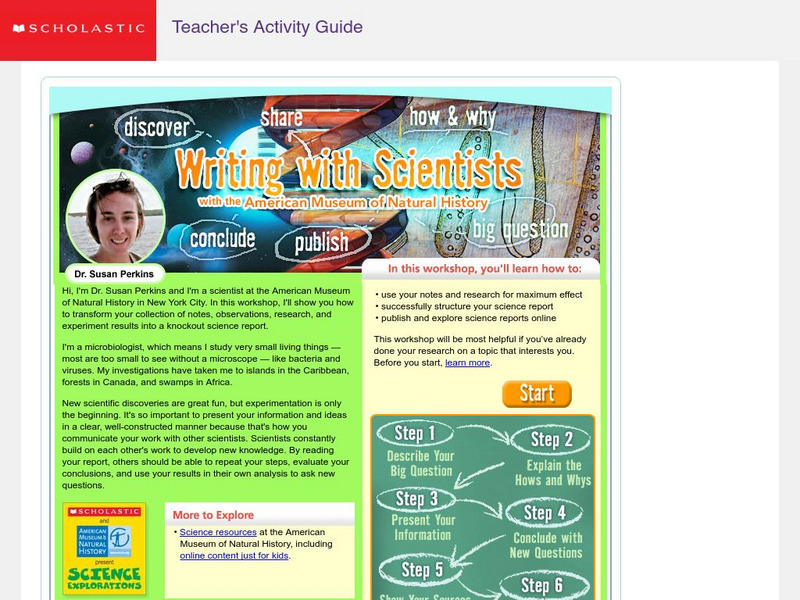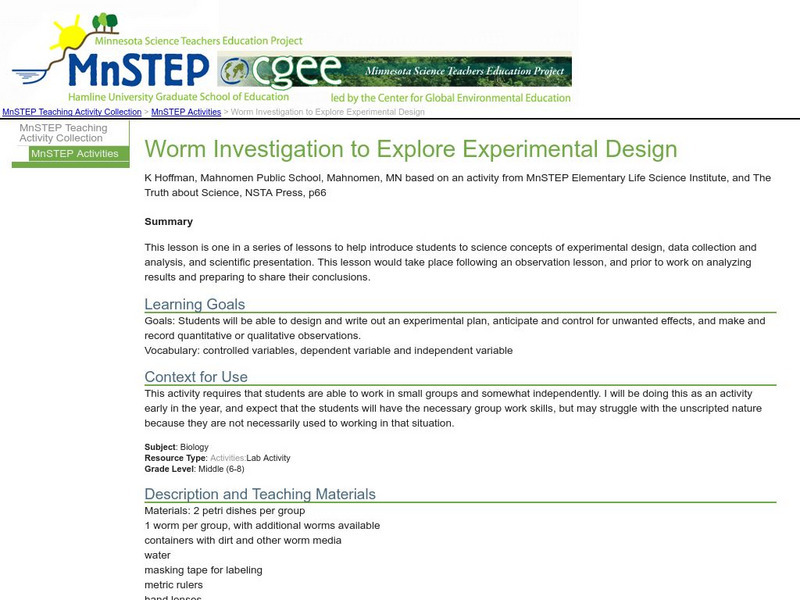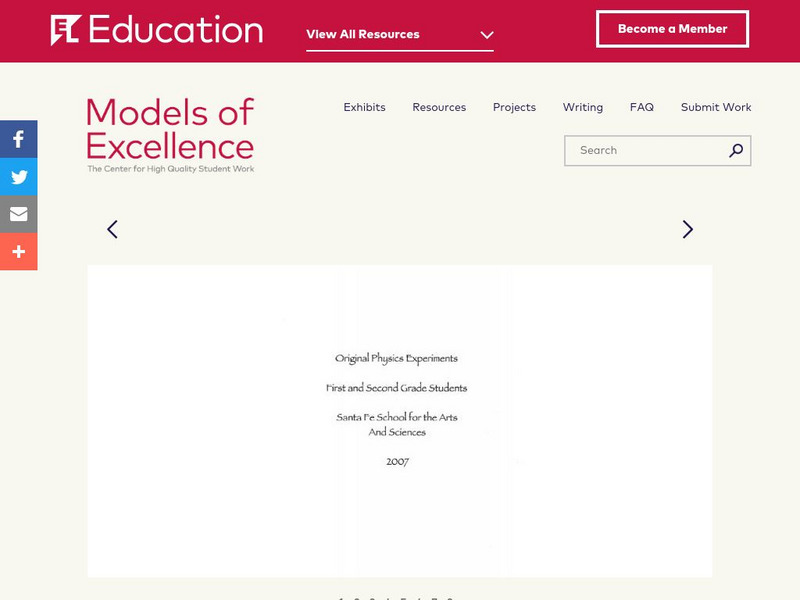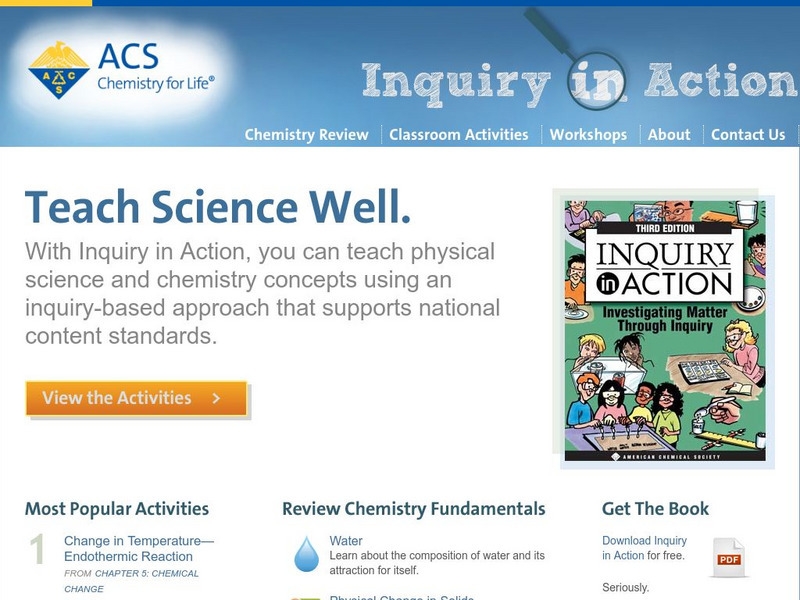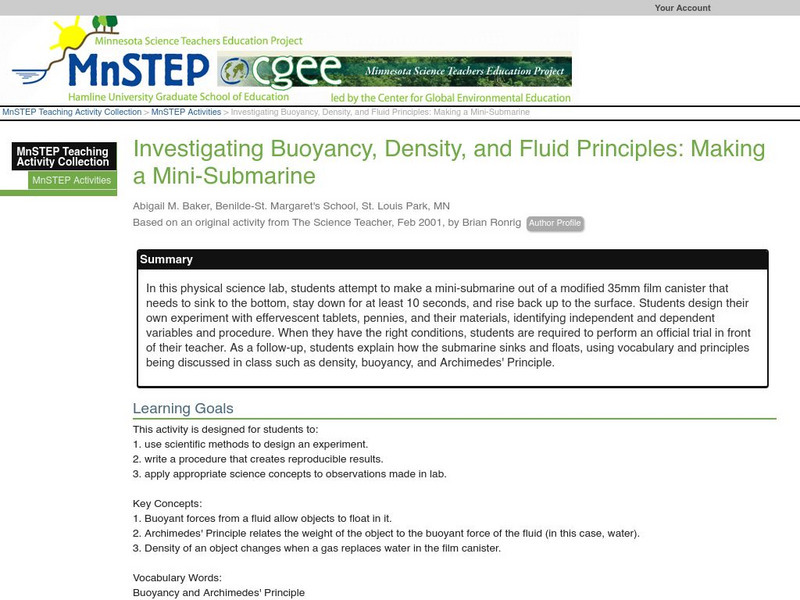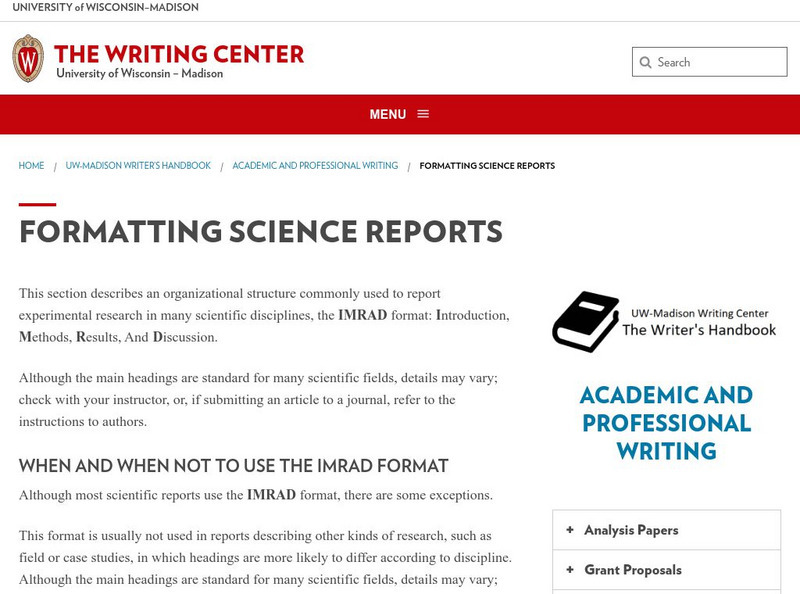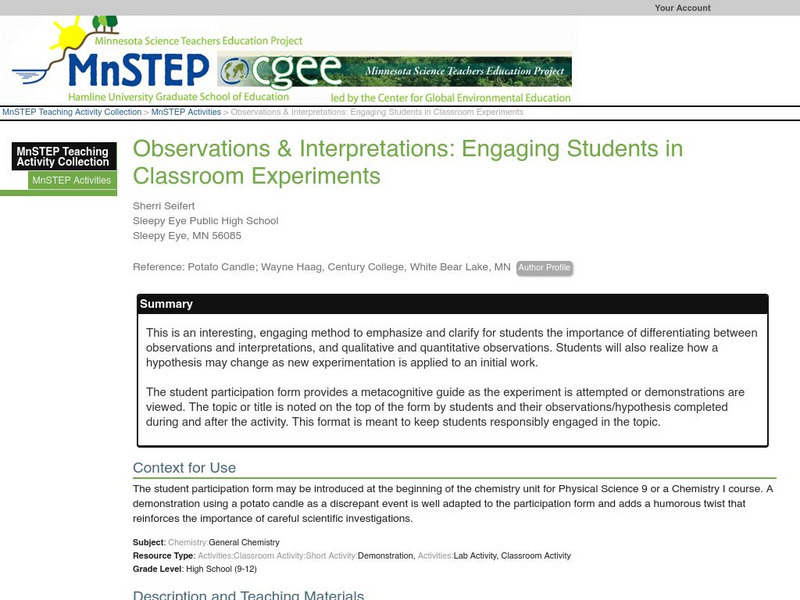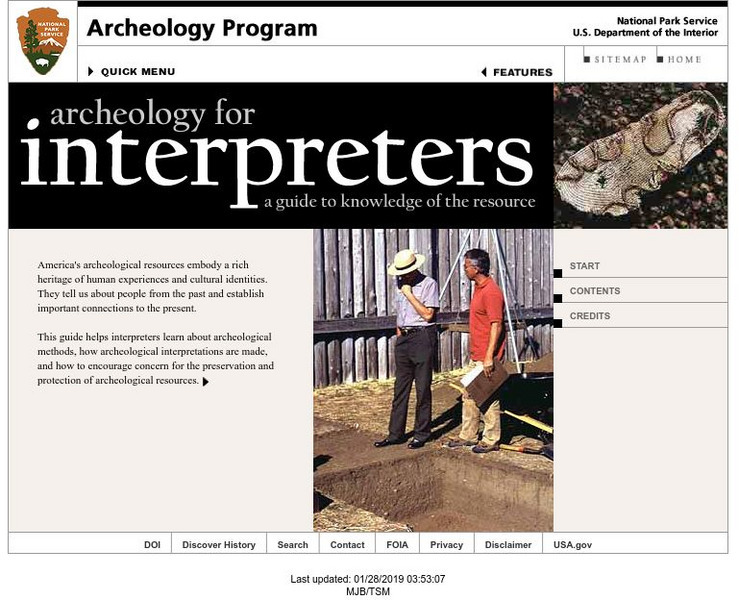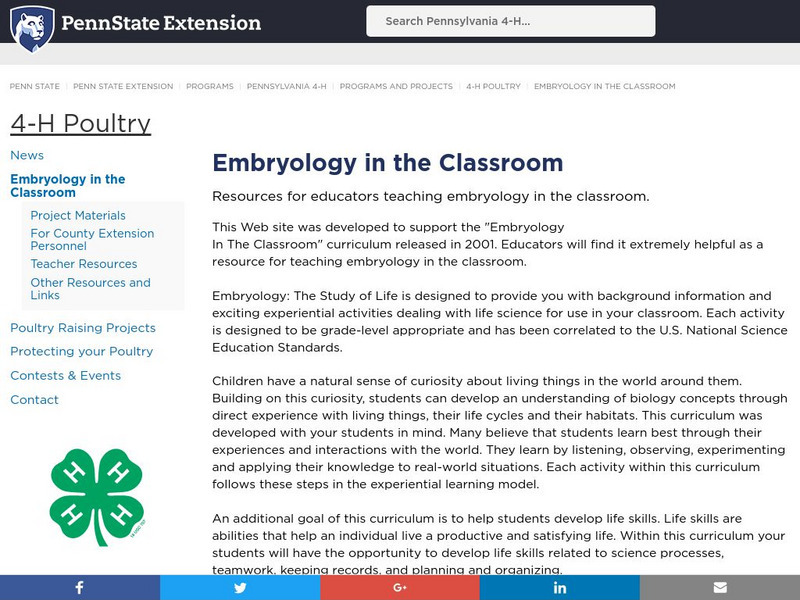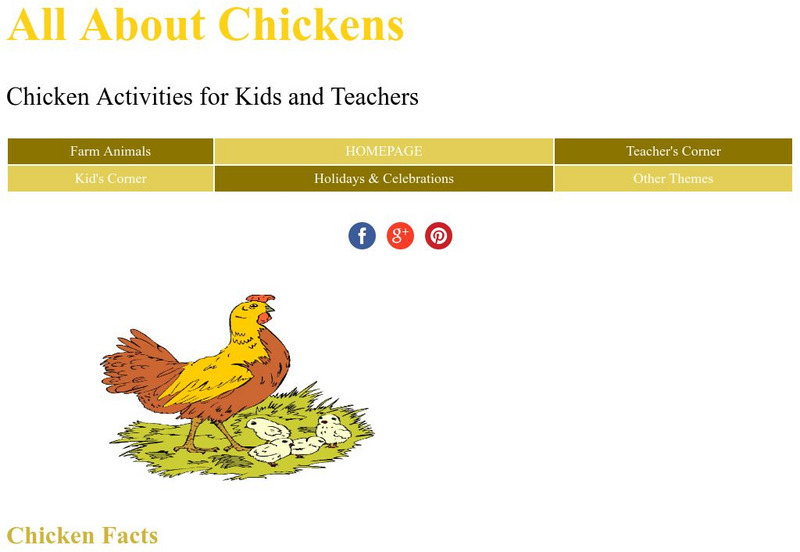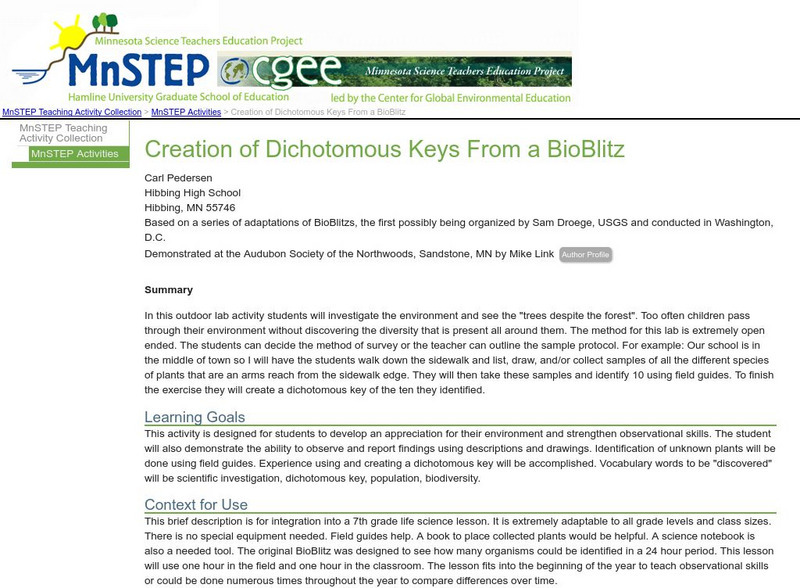Alabama Learning Exchange
Alex: Chemistry Is Colorful!!
In this lesson ,students are introduced to the five major types of chemical reactions reaction type will be analyzed and examples will be noted. Students will then perform a lab investigation which includes each of the different reaction...
University of California
Ucmp: Adventures at Dry Creek
For this lesson, students embark on an adventure to find out what life was like in Montana 60-70 million years ago. Students "join" a research lab to collect fossils from Montana and analyze them to find direct and indirect evidence of...
Science Education Resource Center at Carleton College
Serc: Investigating Projectile Motion: Creating a Catapult
This lesson is for 9th grade physical science students. It begins with an inquiry-based lesson using a projectile motion computer simulation. It culminates with students building a catapult; applying and connecting science knowledge from...
Discovery Education
Discovery Education: Science of Everyday Life: Everyday Science of Eggs [Pdf]
A lab where students can investigate eggs and what happens to egg whites after they are beaten. Lesson plan includes teacher background, standards, and a procedure for students to develop their own experiment.
McGraw Hill
Mc Grawl Hill: Dino Dig
A virtual lab allows you to do radiometric dating on dinosaur bones. You'll be using a mass spectrometer and utilizing several steps of the scientific method.
TeachEngineering
Teach Engineering: Sugar Spill!
In this activity, students act as environmental engineers involved with the clean up of a toxic spill. Using bioremediation as the process, students select which bacteria they will use to eat up the pollutant spilled. Students learn how...
Scholastic
Scholastic: Writing With Scientists With the American Museum of Natural History
Follow this six-step method and you'll have a good understanding of what a good scientific research paper involves and how it is organized. There are plenty of samples for you to look at. This explanation is also very helpful for...
Science Education Resource Center at Carleton College
Serc: Mn Step: Worm Investigation to Explore Experimental Design
For this lesson, students learn about how to design an experiment, factor in other potential effects, take observations, and record their findings. The experiment is done using worms in a lab setting.
EL Education
El Education: Original Physics Experiments
Students ask questions about why things move the way they do and then design and carry out science experiments on the physics behind the movement. Students create lab reports to explain the steps of their process and to record...
American Chemical Society
American Chemical Society: Inquiry in Action: Teach Science Well
Online textbook reviews fundamentals of chemistry and physical science via slideshow presentations, notes, and videos. Materials for classroom activities engage students in inquiry-based, hands-on investigations covering molecular...
American Chemical Society
American Chemical Society: Inquiry in Action: Teach Science Well
Online textbook reviews fundamentals of chemistry and physical science via slideshow presentations, notes, and videos. Materials for classroom activities engage students in inquiry-based, hands-on investigations covering molecular...
Science Education Resource Center at Carleton College
Serc: Investigating Buoyancy, Density, and Fluid Principles: Make Mini Submarine
In this lab, students will use the scientific method to design an experiment that explains how/why a submarine floats and sinks.
University of Wisconsin
University of Wisconsin: Writing Center: Formatting Science Reports
This site outlines the necessary elements of a scientific report. The site is broken down into the follow segments: title, abstract, introduction, methods, results, and discussion. Within each section is a contents section as well as a...
Science Education Resource Center at Carleton College
Serc: Observations & Interpretations: Engaging Students in Classroom Experiments
Use this method to emphasize and clarify for learners the importance of differentiating between observations and interpretations, and qualitative and quantitative observations. Students will learn how a hypothesis may change as new...
Curated OER
National Park Service: Archaeology for Interpreters
The National Park Service provides a guide for new interpreters--that can also be readily understood by students--to learn archeological methods, how archeological interpretations are made, and how to encourage concern for the...
University of Illinois
University of Illinois Urbana Champaign: Chickscope: The Journey Begins
Journey with the chicken egg, from formation to hatching, and learn about its embryology.
University of California
University of California Museum of Paleontology: Science Checklist [Pdf]
Use this seven item checklist to make sure all the parts of a good science investigation are in place.
Pennsylvania State University
Penn State University: Embryology in the Classroom
Come and learn more about how to incorporate embryology into your classroom. This site features tons of information about the embryology of chickens.
Other
Kiddy House: All About Chickens for Kids and Teachers
This comprehensive resource features everything you want to know about chickens. Students and teachers will "cluck" when they explore this site.
Science Education Resource Center at Carleton College
Serc: Creation of Dichotomous Keys From a Bio Blitz
An outdoor lab where middle schoolers investigate the environment and decide a method of survey to identify trees in their area. To finish the exercise they will create a dichotomous key of the ten they identified.
Science Education Resource Center at Carleton College
Serc: Cube Puzzle and Toilet Paper Roll Model in Teaching the Nature of Science
This lesson incorporates inexpensive materials such as carton boxes, toilet paper roll tube, strings and toothpicks. It engages young scholars to conduct pattern observation, prediction, testing and ends up with a model construction. It...
Science and Mathematics Initiative for Learning Enhancement (SMILE)
Smile: Magnet Muscles (Lesson Plan)
A teacher lesson plan which includes a station lab; students navigate through four stations with separate activities on magnetic principles. Easily adaptable as a student project.
Other popular searches
- Scientific Method Lab Report
- Scientific Method Lab Paper
- Biology Scientific Method Lab
- Scientific Method Lab Activity





![Discovery Education: Science of Everyday Life: Everyday Science of Eggs [Pdf] Lesson Plan Discovery Education: Science of Everyday Life: Everyday Science of Eggs [Pdf] Lesson Plan](https://d15y2dacu3jp90.cloudfront.net/images/attachment_defaults/resource/large/FPO-knovation.png)


